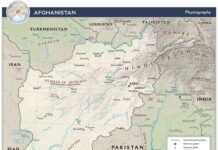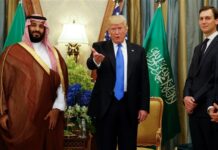Context

The Intelligence Chief for the Lebanese Internal Security Forces, Wissam al-Hassan, died in a bombing October 19, and the Syrian leader Assad has been blamed for the killing as he was in the case of Rafiq Hariri. The proxy war in the Middle East is now escalating and taking a turn for the worse. It appears the emerging posture of Russia will play a key in shaping the politics of the Islamic world.
Analysis
Key Events
October has so far proven to be a dramatic month as far as the situation of Middle East is concerned; unprecedented events are creating unparalleled risks.
For example:
1. An unarmed drone belonging to Hezbollah was shot down over Israel on 6 October. Most analysts indicated the intrusion was to warn Israel and to showcase the vulnerability of its Dome anti-missile defense system.
2. A large arms deal was signed between Moscow and Iraq on 9 October worth 4.2 billion dollars. The deal includes MiG-29 fighter jets, Mi-28 helicopters and Pantsyr-S1 defense systems. Just like Pakistan, Moscow is also interested in Iraq’s energy sector.
3. On 10 October, a Syrian plane carrying surveillance equipment from Russia was intercepted by Turkish F16s, reportedly on US intelligence, and forced to land in Ankara. The event took place as shelling across the Turkey-Syrian border continued.
4. Following up on these events, Russia indicated that while NATO and Turkey are moving towards a no-fly zone over Syria, it will be deploying S-400 interceptor missile system on its border with Turkey. In addition to targeting plane, S-400 is also capable of destroying ultra-stratospheric and ballistic missiles.
Media reports indicated the move was in retaliation to Turkish participation in NATO’s missile defense system. However, the step clearly is also in retaliation to the recent Turkish and NATO actions over the situation in Syria.
5. On 17 October, US indicated that it will be conducting with Israel its largest ever military exercise, named Austere Challenge. The three-week exercise will test Patriot anti-missile systems, an Aegis ballistic missile defense ship system, including the Iron Dome and Arrow 2. “This exercise is purely about improving our combined US-Israeli capabilities,” the US Lt Gen Craig A Franklin commented. “It’s about military teamwork. It is not related to national elections nor any perceived tensions in the Middle East. We are military professionals coming together to train for a defensive mission.”
The Proxy War Of Middle East, South Asia
The above listed sequence of events provides a glimpse of how the situation of the Arab World is beginning to look more like a tussle between international stakeholders. There is talk of bypassing the UN Security Council once more, where China and Russia have consistently vetoed intervention in Syria. There is also noise about acting directly, as witnessed recently in the Libyan crisis, where the French and the British took the lead while US played more of a supporting role.
The proxy war in Syria has already crossed over borders. The killing of Lebanese intel chief is blamed on Shiite Hezbollah who is also supporting the Assad regime against the rebels in Syria and is backed by Iran. On the other hand, the opposition to Assad, is backed by the Sunni factions in Lebanon and by Turkey, Qatar and Saudi Arabia, including NATO. As PoliTact pointed out previously, in the AfPak region, the opposite is occurring. The Sunni militants and jihadist there are opposed by NATO forces, and Pakistan is under pressure to act against Afghan Taliban and the Lashkar-e-Taiba (LeT) that targets India.
This inherent contradiction is likely to complicate western posture in the war on terror and its policy towards the Islamic world. The war against extremists and Arab awakening is becoming a linked phenomenon where the Islamists are resurgent in both instances. Moreover, the inconsistency in western policy is making it difficult to convince China and Russia, and other emerging powers, about their stance on Syria. Especially when emerging powers feel the mandate given to them in Libya was violated.
What To Expect
Most of the Cold War was fought through proxies, while Russia and US though came close, they never engaged directly with each other. The present landscape of the Arab World appears to be showing similar symptoms and trajectory. The established powers are employing proxies as it suites their purpose and its matter of time before the emerging powers may be forced to do as well. The interception of Syrian plane carrying surveillance equipment from Moscow is a case in point. Previously, Russian ships supplying helicopters to Syria were also obstructed.
How far Russia will go to protect its global interests is pivotal to the present predicament of the Middle East. And it is for this reason Pakistan-Russia entente is being watched very carefully. Russia is keen on not letting Afghanistan be solely a NATO agenda. On the other hand, China is increasingly tied down in the pacific, as opposed to worrying about far off places. While China’s involvement in the Islamic world does not differentiate between the Shiite and Sunni factions, as the western countries do, Russia has aligned itself more closely with Shiite-dominated states and may be in the process of diversifying its approach. This fresh outlook is not going to be without challenges; Russia has its own problems with Sunni jihadist in places like Chechnya and Dagestan.



